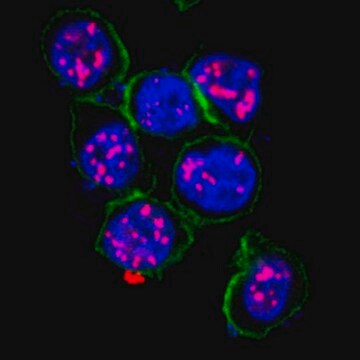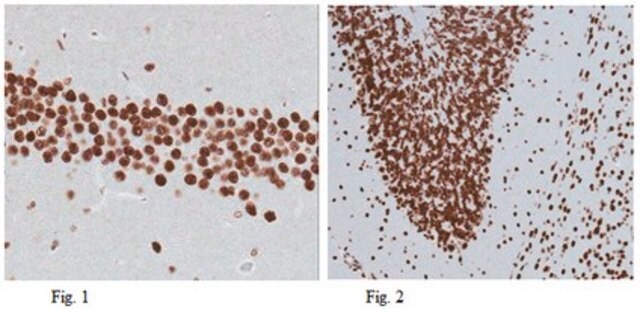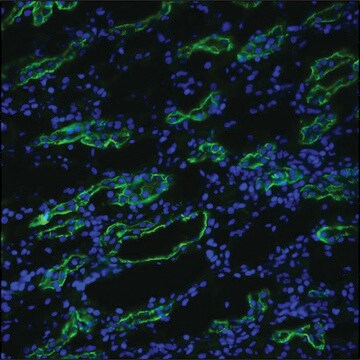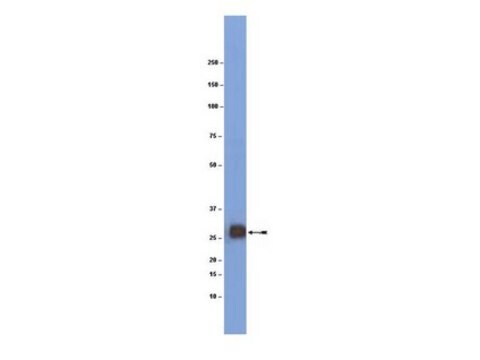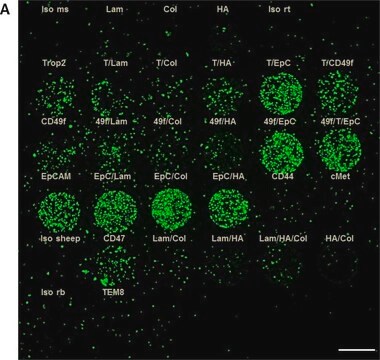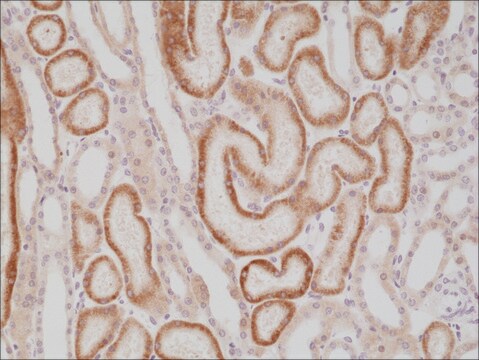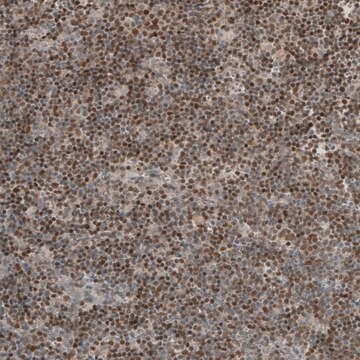MABE1935
Anti-Sox-11 Antibody, clone SOX11-C1
About This Item
Prodotti consigliati
Origine biologica
mouse
Livello qualitativo
Coniugato
unconjugated
Forma dell’anticorpo
purified antibody
Tipo di anticorpo
primary antibodies
Clone
SOX11-C1, monoclonal
PM
calculated mol wt 46.68 kDa
Purificato mediante
using protein G
Reattività contro le specie
human
Confezionamento
antibody small pack of 100 μg
tecniche
flow cytometry: suitable
immunocytochemistry: suitable
immunohistochemistry (formalin-fixed, paraffin-embedded sections): suitable
western blot: suitable
Isotipo
IgG1κ
Sequenza dell’epitopo
Internal
N° accesso ID proteina
N° accesso UniProt
Condizioni di spedizione
2-8°C
modifica post-traduzionali bersaglio
unmodified
Descrizione generale
Specificità
Immunogeno
Applicazioni
Evaluated by Immunocytochemistry in SH-SY5Y cells.
Immunocytochemistry Analysis: A 1:250 dilution of this antibody detected Sox-11 in SH-SY5Y cells.
Tested Applications
Flow Cytometry Analysis: A representative lot detected Sox-11 in Flow Cytometry applications (Nordstrom, L., et al. (2012). BMC Cancer.;12:269; Lu, T.X., et al. (2013). Leuk. Res. 37(11):1412-9).
Western Blotting Analysis: A representative lot detected Sox-11 in Western Blotting applications (Nordstrom, L., et al. (2012). BMC Cancer. 12:269).
Immunocytochemistry Analysis: A representative lot detected Sox-11 in Immunocytochemistry applications (Nordstrom, L., et al. (2012). BMC Cancer. 12:269).
Immunohistochemistry (Paraffin) Analysis: A representative lot detected Sox-11 in Immunohistochemistry applications (Nordstrom, L., et al. (2012). BMC Cancer. 12:269; Nordstrom, L., et al. (2014). Br. J. Haematol. 166(1):98-108; Lu, T.X., et al. (2013). Leuk Res. 37(11):1412-9).
Note: Actual optimal working dilutions must be determined by end user as specimens, and experimental conditions may vary with the end user
Stato fisico
Stoccaggio e stabilità
Altre note
Esclusione di responsabilità
Non trovi il prodotto giusto?
Prova il nostro Motore di ricerca dei prodotti.
Codice della classe di stoccaggio
12 - Non Combustible Liquids
Classe di pericolosità dell'acqua (WGK)
WGK 1
Punto d’infiammabilità (°F)
Not applicable
Punto d’infiammabilità (°C)
Not applicable
Certificati d'analisi (COA)
Cerca il Certificati d'analisi (COA) digitando il numero di lotto/batch corrispondente. I numeri di lotto o di batch sono stampati sull'etichetta dei prodotti dopo la parola ‘Lotto’ o ‘Batch’.
Possiedi già questo prodotto?
I documenti relativi ai prodotti acquistati recentemente sono disponibili nell’Archivio dei documenti.
Il team dei nostri ricercatori vanta grande esperienza in tutte le aree della ricerca quali Life Science, scienza dei materiali, sintesi chimica, cromatografia, discipline analitiche, ecc..
Contatta l'Assistenza Tecnica.